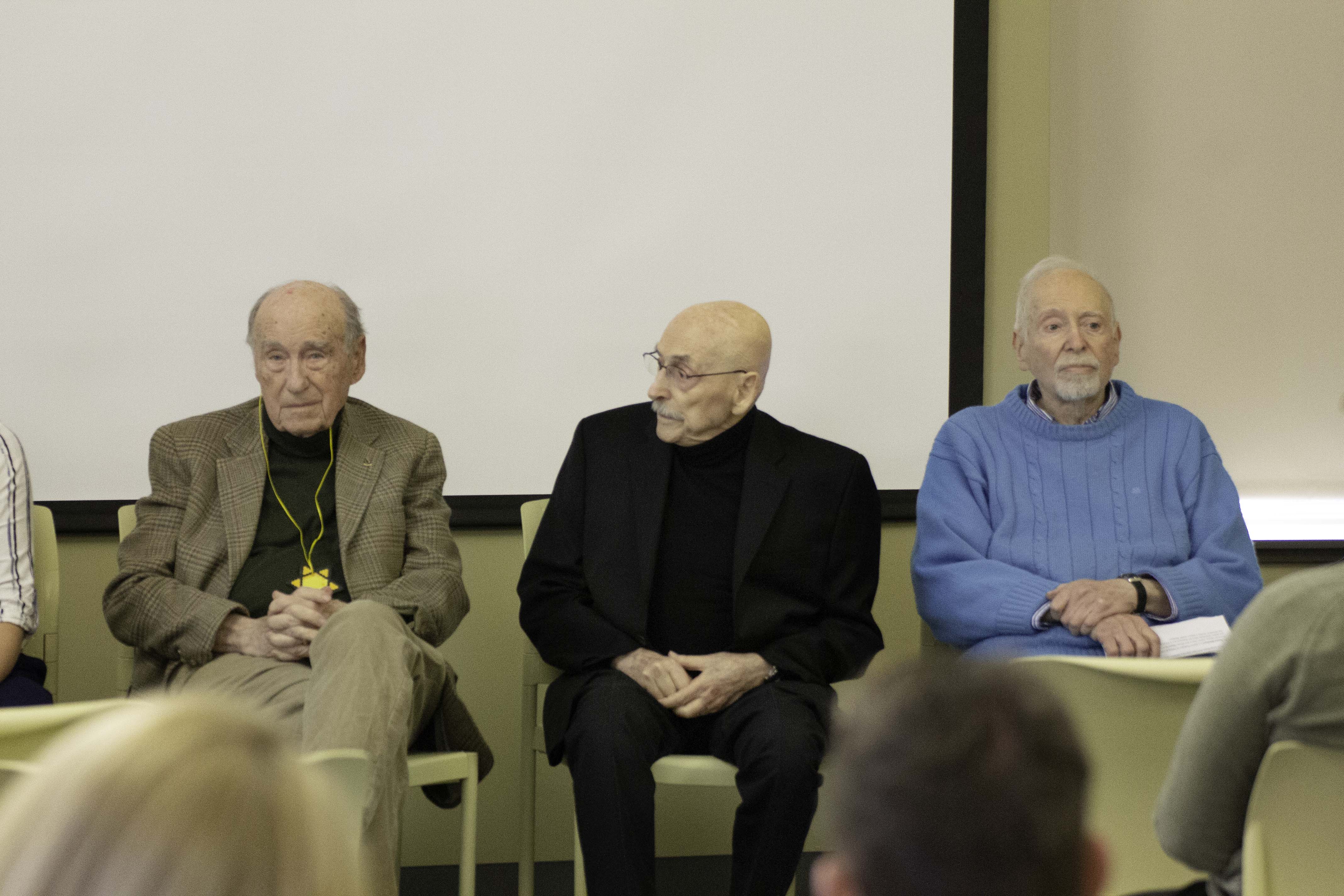(Left to right) Albert Silverstein, Jorge Gardos and Robert Weisbord. Silverstein and Gardos are both Holocaust survivors who attended the screening of ‘The Fence Between Us.’ |Photo by Chris Crosby
Professor Robert Cohen’s FLM 351 production class debuted their short film “The Fence Between Us” last Monday at the Hillel Center that continued the discussion of Holocaust remembrance.
The 13 minute video was a narrative documentary about Nazi Germany that was shown to a crowd of roughly 40 people. Interviews with Holocaust survivors and lawmakers were featured in half of the film, while there was a simultaneous plotline of a little girl growing up under the Nazi regime.
Cohen said after the film was screened that the project will be part of the state curriculum about Holocaust education. The film stated at the end that Rhode Island is one of eight states that has mandated Holocaust education laws in the state’s curriculum.
“I thought it was very important for the University, a public University in the state of Rhode Island, to give something to the community,” said Cohen. “This was my goal of the film, and I think [what] we achieved is to have current students who made the film that can be viewed by the people behind them.”
The unique style of the film surprised some students when they first heard what Cohen wanted them to make. Griffin Alix, a student in Cohen’s class, thought that his teacher was “out of his mind” thinking that Alix and his classmates could pull off such a style and described the initial challenge of it as daunting.
However, the students were also thankful for the project because it allowed them to learn information about the Holocaust through the interviews they conducted that wasn’t available in the standard school textbook.
“I felt like at school I always got the same information, kind of vague answers,” said Amanda Grace, a student in Cohen’s class. “Now that I know exactly what happened having been able to talk to the survivors and I know have a personal touch to this horrible tragedy.”
Alix shared similar sentiments regarding the ability to learn more about the horrific event.
“Growing up everybody got the same information from the same section of the textbook about the Holocaust and other genocides,” he said. “But no textbook can provide the same sense humanity that the interviews in the film provided us with.”
One survivor who was featured in the film was 87-year-old man Jorge Gardos, a survivor who grew up in Hungary during the Nazi regime. He said in the film that he had a happy childhood, but as he grew into his teenage years he began to see the anti-semitism that was present around him on a day-to-day basis. Gardos had to wear a yellow star on his jacket, an identification symbol that told others you were Jewish.
Gardos said that he was inspired by his grandchildren to speak out as a survivor of the terrible tragedy. While he has only been advocating for education on the subject for three years, the survivor said that teaching younger generations about the horrors of the Holocaust could be the thing that “keeps me going.”
Similar to Gardos, interview subject and former URI Psychology Professor Dr. Albert Silverstein said that it was his daughter who told him that he should educate others on the topic. He has since agreed, and has now been giving talks and lessons to everyone from preschoolers to adults about the tragedies he witnessed as a result of the world around him.
The final product earned rave reviews from Silverstein, who himself grew up in Austria when the Nazis had control of the region.
“This is an impressive achievement with the way the narrative interlaced with the general commentary and how the two of those interlaced with the audience situation,” he said. “It was just really impressive.”

